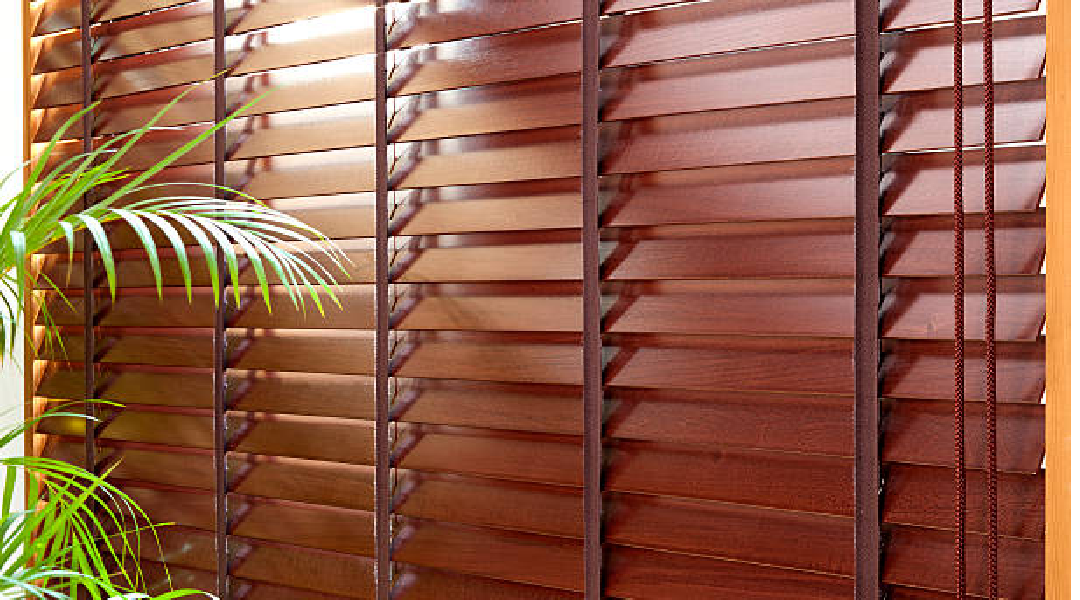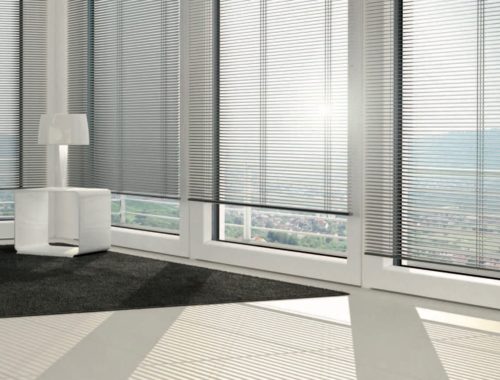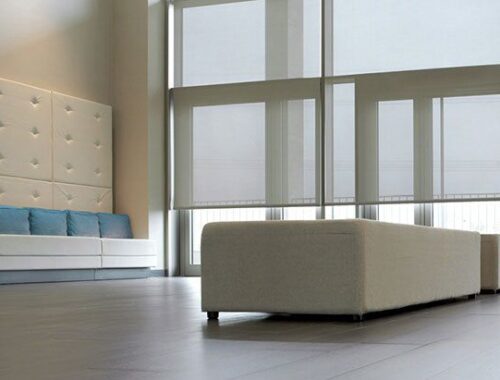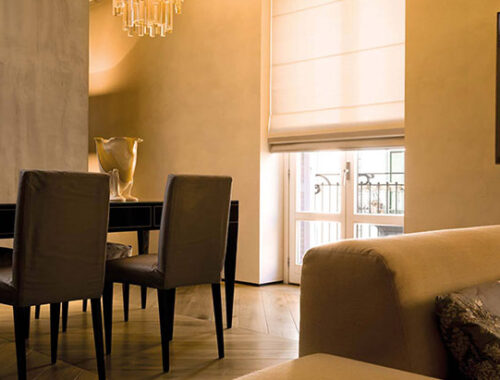Wood blinds have been popular for a long time, owing to their ability to blend in with any room’s design. However, people quickly discovered that the natural characteristics of wood could not always withstand certain situations, such as high humidity.
Since the development of imitation wood blinds, consumers have had a wider range of options to choose from. The variety comes at prices that can suit any budget.
There are a lot of similarities between faux blinds and wood blinds. Both will look great in any room since the material used is the same.
Both blinds are made with string ladders and come in several slat sizes. They include a standard lifting and tilting system, but some designs also have a cordless or motorized system for enhanced safety and convenience.
Benefits Of Real Wood Blind And Faux Wood Blinds
If you’re wondering what’s the difference between faux wood and real wood blinds, knowing about the various benefits they provide us with can give you a conclusive idea!
Real Wood Blind
Wood blinds are noted for their opulent and sophisticated appearance, which faux wood blinds for windows can approximate but not replicate.
These blinds are also available in a range of finishes, allowing you to pick between a neutral tone, black, or white. Wood blinds for windows are also lighter in weight than faux wood blinds, making them ideal for extra-large windows and long-term longevity.
While faux blinds are easier to maintain due to their moisture resistance, real wood blinds may still be cleaned with a damp cloth and a professional wood cleaner if necessary.
Faux Wood Blinds
Now, what does faux wood mean? Well, “faux” means fake wood. They are often composed of vinyl or a blend of wood and synthetic materials, and they can be created to resemble real wood in appearance.
Due to lower manufacturing costs, faux wood blinds are often less expensive than real wood blinds.
Faux wood blinds for windows are also environmentally sustainable as they require fewer trees to be cut down, and the blinds themselves are often totally recyclable.
Faux wood blinds are more moisture-resistant than real wood blinds in terms of longevity, making them ideal for high humidity situations like the bathroom (or simply a humid climate).
Which Is The Best Option: Real Wood Or Faux Wood?
Is it better to choose real wood or black faux wood blinds? Is it true that faux wood blinds resemble real wood? What about the difference between faux wood and real wood blinds? Which of them provides natural insulation?
Is it true that imitation wood blinds for windows are better for high-humidity areas such as bathrooms and kitchens? What are the benefits of real wood over faux wood?
While each form of blind has its own set of advantages, it’s ideal to consider various elements such as the region’s environment (which is critical) and the room’s function (which is also critical) and requirements.
Window coverings installed in high-humidity locations such as bathrooms and kitchens, for example, should naturally be able to withstand moisture.
Consider aspects such as durability, ease of upkeep, and resilience to high temperatures.
The appearance of the window covering is particularly important because it has an overall impact on the room’s décor. Last but not least, your particular taste in terms of the desired style and the overall impression is crucial.
Let’s have a look at some of their advantages and disadvantages to make an informed decision and increase our chances of finding the appropriate window treatment for our needs.
Wooden Blinds For A Classic And Authentic Look
Classic And Modern Appeal Versatility
When it comes to blinds, right wood blinds are difficult to beat. Wood has a timeless appeal due to its rich and warm texture. On the other hand, wood is a lovely accent to modern architecture and combines nicely with wooden furniture.
These blinds may be as light or dark as you want them to be, thanks to the versatility of wood, allowing you to match them to your existing home décor easily.
Not For Use In High-Humidity Areas
While there’s no denying that wood blinds are attractive, they do have a drawback. Because real wood blinds cannot survive excessive humidity, they should not be used in rooms like the bathroom, kitchen, or laundry room.
Real wood will distort or fade if exposed to high humidity for an extended period.
Insulation From The Environment
Wood is a natural insulator, meaning it protects you from the elements. They limit solar heat gain by blocking UV rays.
As a result, wood blinds are an excellent solution for energy efficiency because they help to minimize energy consumption and lower energy bills.
Ideal For Bedrooms And Living Spaces
While wood blinds aren’t ideal for high-humidity areas like bathrooms or kitchens, they’re ideal for other areas like the bedroom or living room.
Custom wood blind vanes in painted, rustic, or stained finishes are a great way to match your home’s design.
Deep Clean With Lemon Tree Oil/Furniture Polish
Wood blinds can be dusted with a clean cloth regularly. Water should not be used for a deep clean to avoid damage. Instead, wipe off wood blinds with a soft cloth sprayed lightly with furniture polish or lemon oil.
Faux Wood Blinds For Moisture Resistance And A Wood-Like Appearance
Appearance Of Wood
You know the faux wood meaning is “fake wood,” but that’s not something you worry about. The faux wood blinds appear like real wood and are durable polymer materials rather than real wood.
They come in several colors, including neutrals and white. For that perfect finishing touch, teak imitation wood blinds are also available.
Moisture-Resistant And Long-Lasting
The main distinction is that, unlike wood blinds, these are water-repellent and do not fade when exposed to humidity. This makes them perfect for humid zones like bathrooms, kitchens, washrooms, and laundry rooms.
Easy To Clean
Cleaning faux wood blinds is easier than real wood blinds. You may wipe them clean regularly to keep them in good shape.
Alternatively, in the event of more serious spills or mess, they may be thoroughly cleaned by simply hosing them down or submerging them in water without fear of warping or other water damage.
Takeaway
Although wood blinds and faux wood blinds have similar appearances and feel, they have distinct qualities that make them suited for diverse applications.
Which blind is more effective? Well, that’s entirely dependent on the room they’ll be entering!




No Comments